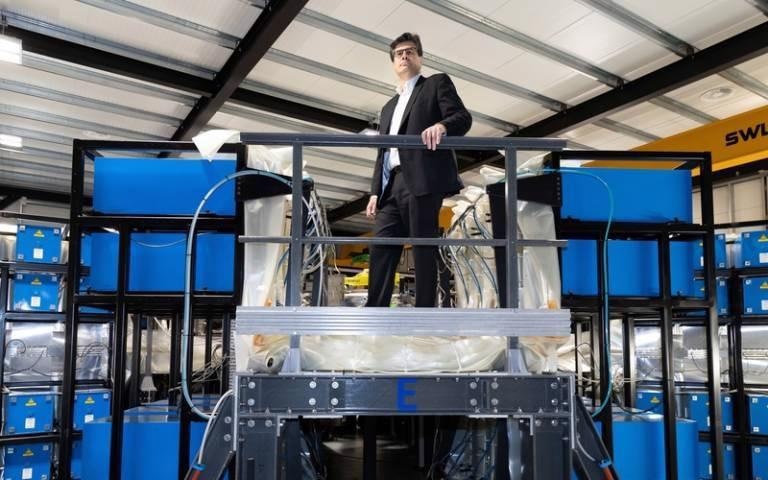Reviewed by Alex SmithApr 11 2022
For the first time, a spinout at Oxford University has achieved a nuclear fusion breakthrough using a novel projectile approach.
 Professor Yiannis Ventikos, Image Credit: First Light Fusion
Professor Yiannis Ventikos, Image Credit: First Light Fusion
The UK Atomic Energy Authority (UKAEA) has officially approved First Light Fusion’s method, which includes firing a 100 g projectile at 6.5 km/second onto a fuel pellet containing tritium and deuterium from a 22-meter gas gun.
It is not just faster and less expensive than previous fusion techniques, but it also provides a more straightforward path to fusion energy production utilizing current plant technology.
While achieving fusion in the lab is a tremendous success in its own right, the context is equally important. True to First Light’s rigorous scientific approach, this result is supported by strong and continuously evolving computer modeling. This capability sheds light, in exquisite detail, into the processes that generate these neutrons.
Professor Yiannis Ventikos, Kennedy Professor of Mechanical Engineering, University College London
Professor Ventikos stated, “Such tools are in daily use by First Light’s scientists, helping design unique targets, launchers and, amplifiers, navigating the challenging path towards gain and a first-of-a-kind reactor. This pursuit of a practical and affordable fusion will give us the clean and abundant baseload power that we so desperately need in our effort to address—and hopefully reverse—global warming.”
First Light Fusion was created in 2011 and is now working on new experiments, including attempting to overcome one of nuclear fusion’s primary challenges: creating more energy than is consumed to trigger the reaction.
The company intends to construct a 150 MW pilot power plant in the 2030s, and it is already working on development plans with UBS, a Swiss bank, with the ultimate goal of constructing many power plants.
Every 30 seconds, the process could be repeated, with each pellet generating enough energy to run an ordinary UK house for more than two years.
Out approach to fusion is all about simplicity. Being simple, we believe projective fusion is the fastest path to commercially viable power generation from fusion. We aim for simplicity in the power plant engineering, but we also want to make the fusion process itself as simple as possible.
Dr. Nick Hawker, CEO and Co-Founder, University of Oxford
Dr. Nick Hawker added, “The key technology is our target designs. As objects, these are very complex, but the physics is simpler than other fusion approaches; it can be understood and simulated accurately. With this result we have proven our new method for inertial fusion works and, more importantly, we have proven our design process. The design used to achieve this result is already months out of date.”
“As soon as we reach the maximum with one idea, we invent the next, and that incredible journey of discovery is what is so exciting,” Dr. Nick Hawker concluded.